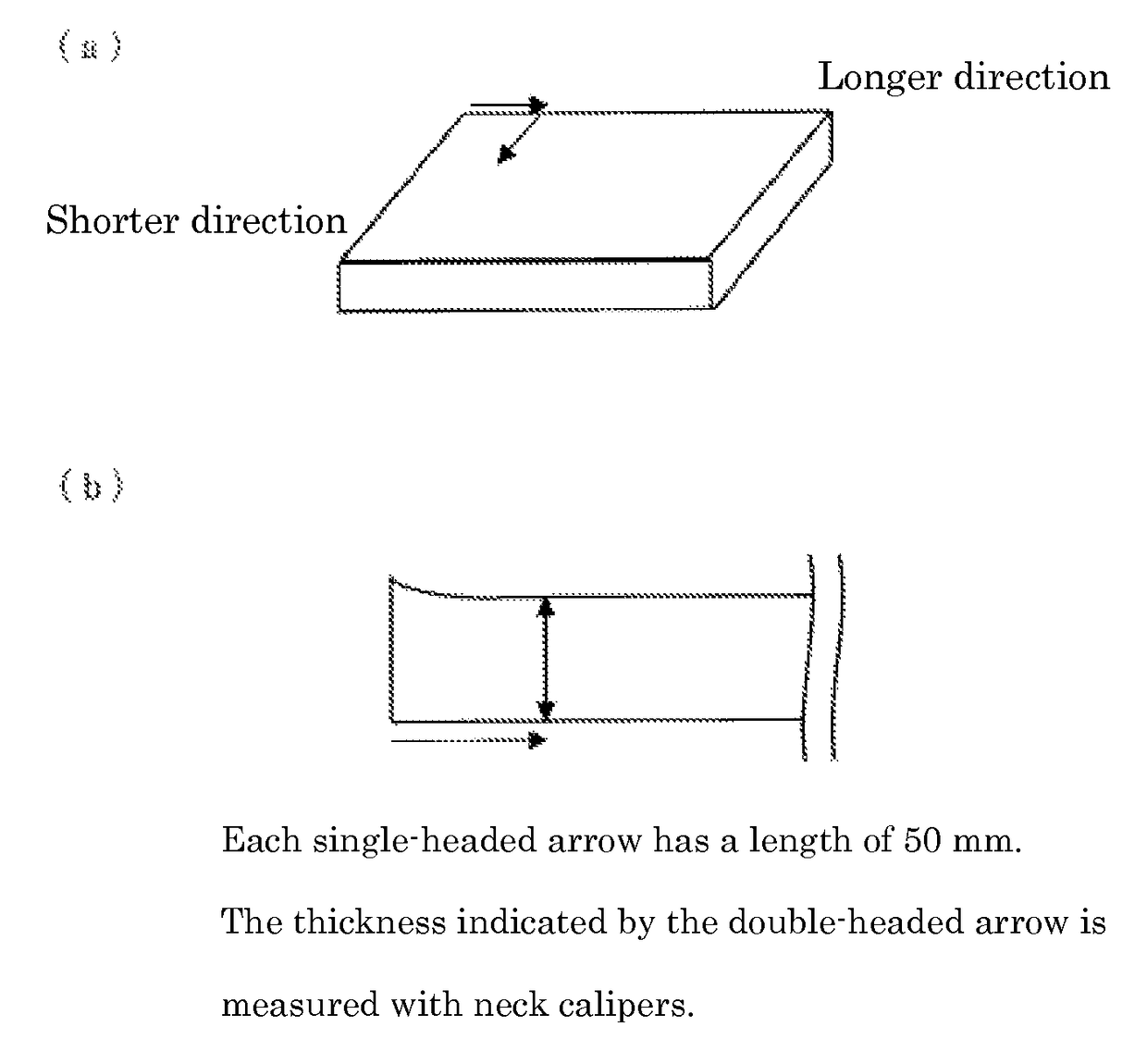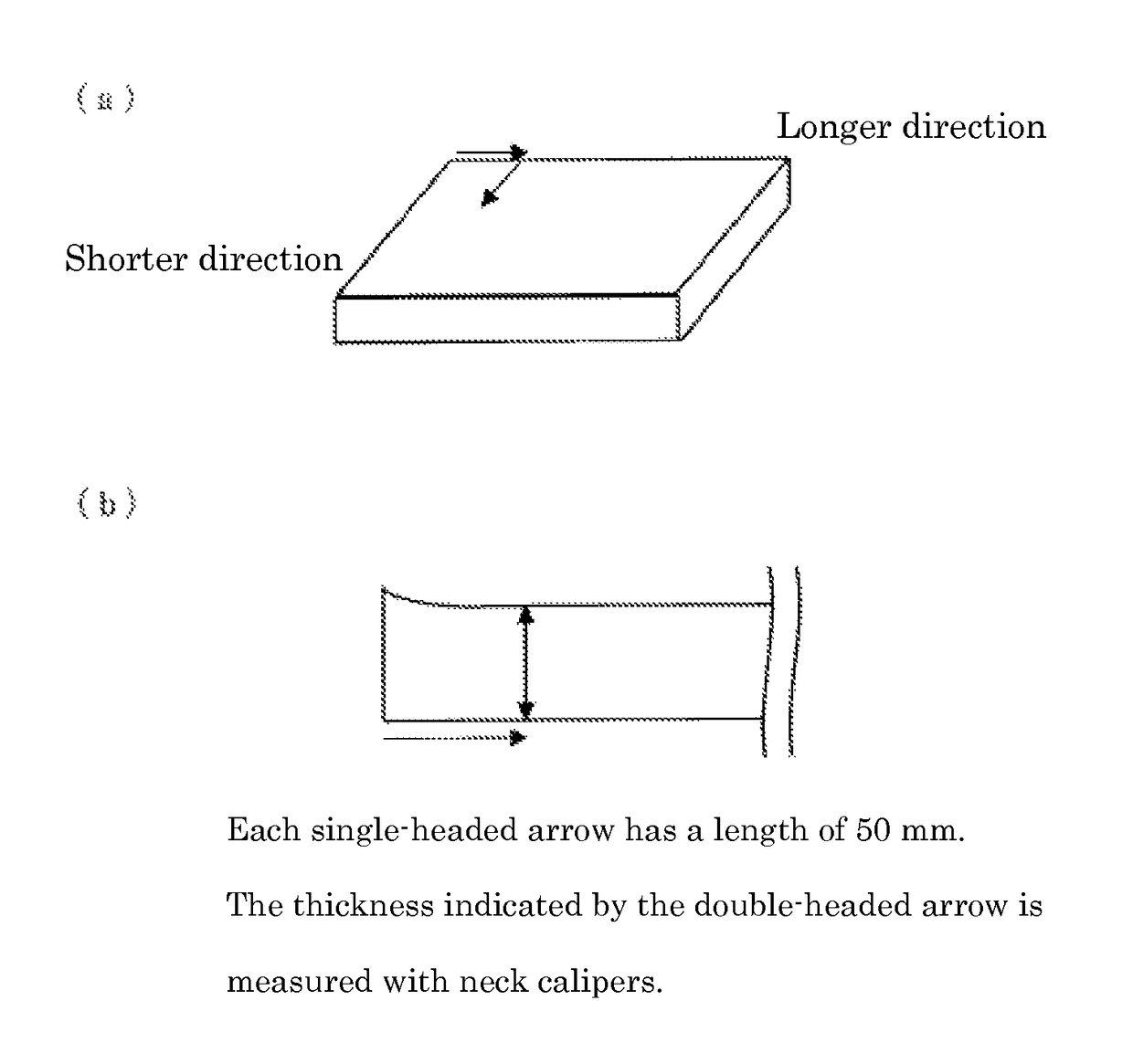Antistatic non-crosslinked foamed polyethylene resin particles and molded non-crosslinked foamed polyethylene resin body
a technology foamed polyethylene resin, which is applied in the field of antistatic non-crosslinked foamed polyethylene resin particles and molded non-crosslinked can solve the problems of large shrinkage ratio of foamed polyethylene resin bodies produced from foamed polyethylene resin particles, poor dimensional precision, and large shrinkage ratio of mold dimensions, so as to achieve small shrinkage ratio and good surface stretch
- Summary
- Abstract
- Description
- Claims
- Application Information
AI Technical Summary
Benefits of technology
Problems solved by technology
Method used
Image
Examples
example 1
[Preparation of Resin Particles]
[0151]With respect to 100 parts by weight of a linear low-density polyethylene having an MI of 2 g / 10 min, a melting point of 123° C., and a gel content insoluble in heated xylene of 0.3% by weight, containing 8.2% by weight of 4-methyl-1-pentene as a comonomer, and having a resin density of 0.926 g / cm3 as a base resin, 0.2 part by weight of glycerin [manufactured by Lion Corporation, purified glycerin D] as a hydrophilic compound, 1.0 part by weight of glyceryl monostearate [manufactured by Riken Vitamin Co., Ltd., Rikemal S-1001] as an antistatic agent, and 0.04 part by weight of talc [manufactured by Hayashi-Kasei Co., Ltd., Talcan PKS] as a cell controlling agent were dry-blended.
[0152]The dry-blended mixture was melted and kneaded with a single screw extruder at a resin temperature of 210° C. and extruded into strands through a circular die attached to the end of the extruder. The strands were cooled with water and then cut with a cutter to yield...
examples 2 and 3
[0158]Polyethylene resin particles, non-crosslinked foamed polyethylene resin particles, and a molded non-crosslinked foamed polyethylene resin body were obtained in a similar manner to that in Example 1 except that water was removed from the non-crosslinked foamed polyethylene resin particles (single-step foamed particles) obtained in Example 1 and then the resin particles (single-step foamed particles) were impregnated with air by air pressure treatment and were subjected to second-step foaming at the internal pressure and the water vapor pressure described in Table 1 in [Preparation of Foamed Particles].
[0159]Table 1 shows evaluation results of the non-crosslinked foamed polyethylene resin particles and the molded non-crosslinked foamed polyethylene resin body.
example 4
[0160]Polyethylene resin particles, non-crosslinked foamed polyethylene resin particles, and a molded non-crosslinked foamed polyethylene resin body were obtained in a similar manner to that in Example 1 except that 2.0 parts by weight of glyceryl monostearate was used as the antistatic agent in [Preparation of Resin Particles] and the second-step foaming was carried out at the internal pressure and the water vapor pressure described in Table 1 in [Preparation of Foamed Particles].
[0161]Table 1 shows evaluation results of the non-crosslinked foamed polyethylene resin particles and the molded non-crosslinked foamed polyethylene resin body.
PUM
| Property | Measurement | Unit |
|---|---|---|
| density | aaaaa | aaaaa |
| density | aaaaa | aaaaa |
| density | aaaaa | aaaaa |
Abstract
Description
Claims
Application Information
 Login to View More
Login to View More - R&D
- Intellectual Property
- Life Sciences
- Materials
- Tech Scout
- Unparalleled Data Quality
- Higher Quality Content
- 60% Fewer Hallucinations
Browse by: Latest US Patents, China's latest patents, Technical Efficacy Thesaurus, Application Domain, Technology Topic, Popular Technical Reports.
© 2025 PatSnap. All rights reserved.Legal|Privacy policy|Modern Slavery Act Transparency Statement|Sitemap|About US| Contact US: help@patsnap.com


